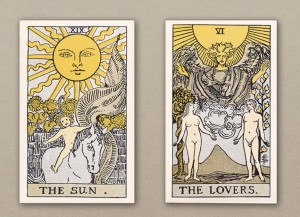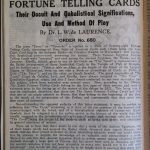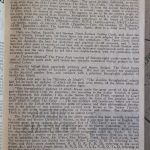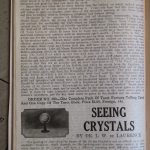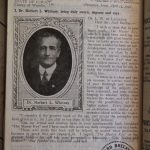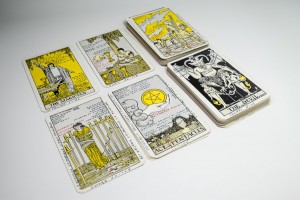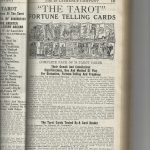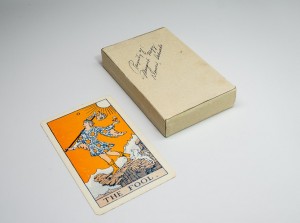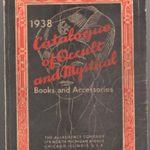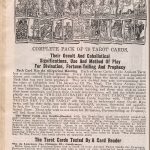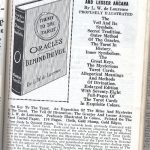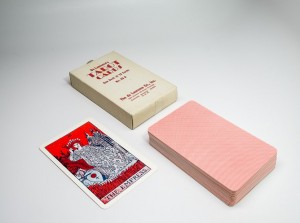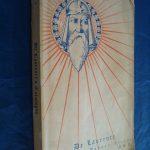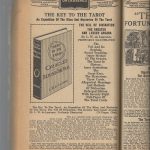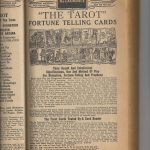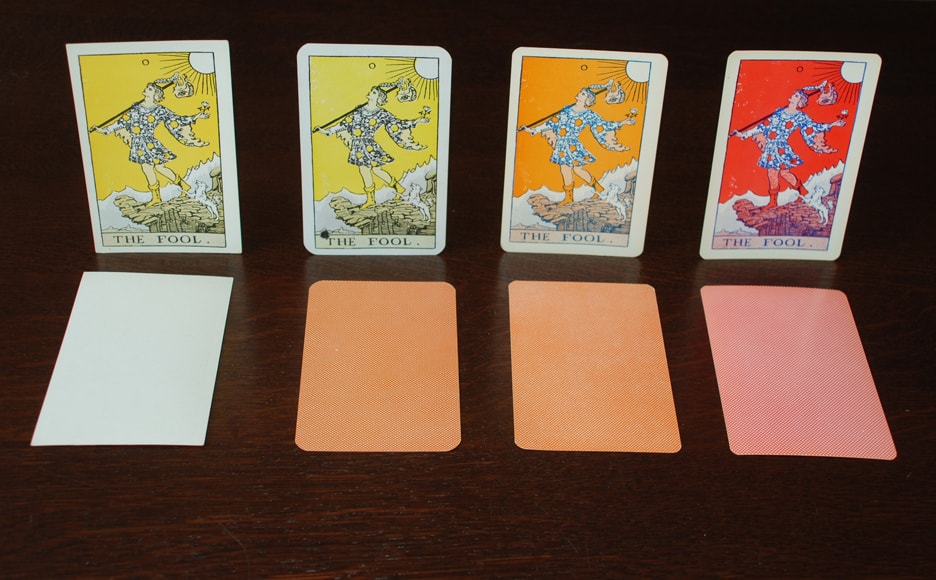
de Laurence’s tarot decks
The world was a tumultuous place in 1916. Europe was being torn apart by World War 1 and the Russian empire was crumbling to nothing while her people starved. It was a difficult time to launch a new recreational product and expect people to have the time and merriment to enjoy it with friends. Arthur Waite’s tarot had made its way east with some success but across the pond to America was a vastly different story. With Britain deeply immersed in chaos and the rationing that comes with war it was cost prohibitive and a logistics nightmare to expand a push of a new luxury product (e.g. “the finest deck of tarot cards ever created”) on a populace (Americans) who had no idea what it was or why they needed it in the first place.
America was more fascinated with new advancements in technology then it was in old, mildewy occult secrets from Europe, written by people who had been dead for hundreds of years. America had the automobile and the light bulb, and this thing called “radio” (not to mention silent movies—which were all the rage). America was thriving, especially in cities like New York and Chicago, and Americans wanted things that were “new and different.” There was not much of a market in the states for a deck of tarot cards until L.W. de Laurence created one out of thin air.
America at the time was an exporting machine, sending massive supplies to England (mostly for the war) and importing oddities and knick knacks from all over the world. A few of Waite’s tarot decks and books made it to the U.S. and one in particular landed on the desk of L.W. de Laurence of Chicago, Illinois. L.W. was a successful importer and occult merchant, as well as a popular teacher of hypnosis. His thriving catalog business had buyers from all parts of the globe, especially those parts not engaged in a war that decimated families, cities, and economies. L.W. sold curios to anyone who requested a free catalog, and business was good. By all observations it looks as if L.W. got his hands on a Rider deck around 1915. His earlier catalogs make no mention of the tarot, and the first catalog that does references Mather’s booklet on the tarot, not Waite’s.
100 years ago L.W. de Laurence released his vision of the tarot to the world in a limited run edition and it sold well enough to warrant numerous reprintings for the next 70 years. Because de Laurence was a mail order genius and not a retailer he understood the power of ad copy and plain packaging. The money he saved by packaging his original deck in a plain white cardboard box, and refusing to print anything at all on the backs of the plain white card stock of his deck was invested in deeper market penetration. His deck came in “five oriental colors” (black, gray, a harsh yellow, orchre—which was created by a blend of yellow and gray, and light yellow, or blobs of yellow on white paper to create a lemony color). These “five colors” were cleverly created using only two inks, or “black + 1 color,” since everything was printed in black. This savings allowed him to present his decks as being exotic yet tremendously inexpensive to produce at the same print shop that made his catalogs and books. This was a luxury not shared by Rider of London.
With these advantages (an international mail order juggernaut, a strong local following in one of the world’s great metropolises of its day, cheap printing costs, and all of America and the Caribbean to himself) L.W. de Laurence, and his son Velo after that, flat out owned the tarot market in the U.S. until 1960. Even after the debut of University Books Inc.’s revolutionary deck the De Laurence Company held strong for several decades due to their legendary stature and generations of clients all over the world. They sold more books than any other individual bookseller in the world, and they were the leading supplier of occult items in the U.S. for decades. Threading their way through this history are four decks, one designed and printed by L.W. himself and the rest by his son Velo de Laurence, who ran the family business after graduating from the University of Chicago. Here is a bit of detail on each of the de Laurence family’s decks, and their most probable timelines . . .
Click the catalog thumbnails to see them full sized. Click here to see Mathers’ original text.
This was de Laurence’s entrance into the tarot. The first positive proof we have of the existence of this deck is from a 1916 catalog which contains a three page ad in the later part of the book. This catalog in and of itself is a masterpiece of edumercial marketing. It did not just display, it informed, The designers of this catalog (“L.W.” and “Scott”) invested months of research, study, and planning purring this together. Imagine the world this catalog existed in: Movies were silent, radio had no pictures, and for many people of the world mail order was their only link to the wonders experienced by the inhabitants of the world’s top metropolises (especially in America). The arrival of this catalog in the mail was an event, like Christmas. It was like getting the massive Sears & Roebuck catalog, but this was filled with magical goodness. In the privacy of our own homes (and this catalog came in a plain large envelope) we could explore the wonders of the far east without the judgment of our nosy neighbors.
The ad in this catalog quotes heavily from Mather’s 1888 treatise on the tarot, not from Waite’s KtT. This leads me to believe that de Laurence had the images in place but was not ready to publish Oracles Behind the Veil just yet. Instead he advertises Mather’s book(let) as a freebie to be included with each deck. I want this to mean that this catalog (and thus de Laurence’s first run of cards) is around 1914 instead of 1916, except that there is a notary seal dated 1916 on a later page of the catalog. As L.W.’s “Veil” is copyrighted 1916 it makes no sense that he would not include it until a later catalog Bah! This is too much effort for a tiny monkey-brained primate to consider. Here are some images of the catalog with the ad. These will open up in a new window as they are large enough to read the fine print.
Velo may have studied marketing at the University of Chicago, but his real education came from his old man. Velo sat, first at the feet of, and later on the board with, L.W. himself. Velo was in every way L.W.’s son, and he was instructed in the fine arts of charm and persuasion even as he learned the mail order catalog business. He transformed L.W.’s small, frequently changed catalogs (drawn from a huge swipe file) into a singular monolithic bible of information and advertisements. Velo turned a catalog—with interesting helpful information—into a full on encyclopedia of remedies to all sorts of maladies. His catalog is the ancestral father of the modern infomercial, and to this day his ad copy sells products, albeit in a much smaller form. The 1931 de Laurence Company catalog shows this in the new tarot advertisement. It spans two pages, cleverly showcasing one item per page and including a single call-to-action at the bottom of the second page that offers the reader BOTH items for one amazingly low price. The new deck is priced at $5, reflecting the added expense of setting up a first run of plastic coated playing cards and box printing. This new deck would set the standard for all future de Laurence decks and was the first Waite-Smith style deck to use a cardboard “tuck-box.” The tuck-box has since become the #1 method of packaging tarot boxes, with well over 95% of all decks sold in this style of box. This was all Velo’s doing.
At first Velo kept the vision of his father’s tarot deck intact, staying with the cost efficiency of “two color printing” (black and yellow) to cleverly create the “five oriental colors,” but he outsourced the printing of this deck to a professional card manufacturer. This points to the extreme popularity of tarot cards in the United States and other locations all over the world where the de Laurence Company’s catalog reached. No one reading the catalog could tell the cards were “yellow and black” but they could read of their magical powers. Rider, at the time, had no global distribution to match de Laurence, and with England recovering from the first World War only to be forced into a second one just two decades later they were out maneuvered by the boys from Chicago. “Legally” or not this deck introduced the world to the modern tarot.
Pumpkin orange. Sure, why not? It may have been a Halloween prank. In any case these cards grow on you. I really like the yellow (it took me 30 years to appreciate the de Laurence decks—I did not like the colors at all as a kid) but the orange has been growing on me. Keep in mind that there is no substitute for a fully colored deck, but given the historical value and legendary status of these decks they have their appeal. So why Velo made an orange deck is something only his daughter can answer and I have no word from her yet. I hope that she helps clear up this mystery, as it would be great to preserve the family history, and at this point she is the only one who can tell us. This deck, like its cousin, the round yellow, has an orange diamond-back / crosshatch background. This will change with the red deck (below). While we have no exact dates of production, we do know the address of the de Laurence Company when each (rounded corners) deck was made, and we know when the company was at each address (for the most part). That means that this deck was produced by Velo de Laurence between the years of 1931 and through at least 1954, probably all of the way to July 1963.
Unlike the yellow decks the line ink on this deck, and the red to follow, is a dark blue. The “standard orange crosshatch / diamond-back” on the back speaks of a playing card manufacturer, but this was a private label job so it is hard to tell whether this was done in the U.S. or overseas. I want to say it was domestically produced given that there was a strong manufacturing base economy existent during the era these cards were created. Given the slightly offset image alignment of he cards I want to say this work was done by a low-budget print shop, but the registration on some of these decks is remarkable so perhaps the fault lies not with the printer. Either way it seems that a few runs were made of these cards, given the variance in quality. Also, the company moved a few times during the time the orange decks were printed. It says so right on the boxes. It looks as if the same company printed the cards but the quality seems to deteriorate over time. Several specimens we have found have a bookshop label pasted over the de Laurence company name and address. These labels range from Llewellyn Publications in California to mega-sellers up and down the east coast. This shows that during the run of the orange decks this was the defacto standard for tarot cards (pre University Books, Inc. decks). This, and the one or two digit postal zone numbers (implemented in wide scale in 1943, but some were known as early as the 1920’s) suggests this deck’s origin is in the 40’s and ran through the early 60’s.
This is, without doubt, the worst de Laurence deck ever created.
I know I will catch hell for that from Madam de Laurence but still, it doesn’t take a forensic expert or even a discerning eye to see how far from the tree the apple (which can also be red I am told) has fallen. Say what you will about L.W. (and I know some of you will), the man was obsessed with quality and value. His prices were always low to the point of absurdity, and he gave away tens of thousands of his catalogs just for asking, never asking a dime up front. The money he lavished on his customers is (to this day) nothing less than obscene. His greatest “crime” and this has yet to be proven in court—so don’t shoot the messenger (me), is that he copyrighted material from Waite, and on some accounts failed to even mention where the material he used came from. This can be fairly blamed on the copyright laws of the U.S. and England of the time, but I am not excusing his behavior. Nor am I excusing this deck, which is a crime against humanity. It is high treason to the house of de Laurence in its boorish composition. Quality this bad should be reserved for the “B” deck by Rider, or the “D” which were abominations unto the Lord himself.
The problem with greatness is always the shadow it casts over your heirs (Julius > Agustus > the fall of Rome). Someone dropped the ball here instead of raising the price and demanding higher quality. Also, the fact that University Books, Inc. was printing the world’s first premium quality tarot decks (in full color) did not help the fortunes of this incarnation of the de Laurence-Waite-Smith-Mathers creation. The skin tones are blotchy, which we also see in the highly prized Waddington deck with its “Blushing Fool,” but here we only have one color (red) against a white background, so the effect is magnified to the point of absurdity. It is sad to see a giant stumble, but even more to see it reduced to a caricature of itself. What worked in 1916 in mail order only could not survive the technicolor explosion of the 1960’s and beyond in retail stores. This was the de Laurence Company’s last deck, unless they start from scratch and issue one anew; one that will help them reclaim their throne as the world’s largest occult supplier. Until then, these are worth gobbling up if you can find them. They seem to have been printed once and they rarely come up for sale.




